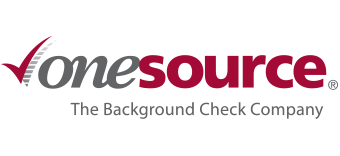At One Source, we provide comprehensive, transparent and useful background check education and resources on a weekly basis. We are experts in the screening industry, and we want everyone to have access to a categorized review of One Source’s background check resources to determine their security needs.
We will continue to curate blog posts and include them in this quarterly review of our blog. We’ll organize the blogs by topic to make it easier to find the information you need and utilize our knowledge when you need it. With that said, let’s dive into the One Source Background Check Resources Review.
Background Check Resources Review : General Background Check Information
Should social media checks be included in screenings?
A job candidate’s social media accounts can provide a clear picture of their true behaviors and personality—and social media screenings can absolutely have a place in the hiring process. However, that screening should not be as simple as letting your hiring manager quickly scroll through a candidate’s profile(s). In this blog, we explain how you can ethically and seamlessly integrate social media checks into your hiring process.
How to maximize your investment in quality background checks
When done right, background checks drive success. But when done insufficiently, poor background checks can lead to serious difficulties. That’s why background checks should be considered as investments in the future of your organization. Here we’ll talk about how making the most of your investment in background checks strengthens your company and how you can avoid the hidden costs of inadequate screenings.
The state of the screening industry during the pandemic
This blog is from the first week of May, and we do have more current COVID-19 information on our site. However, this blog sets the baseline of the screening industry’s response to the pandemic and how the pandemic has impacted screening turnaround times and protocols.
Compliance and Ethics
Answering all of your Fair Credit Reporting Act and adverse action FAQs
The Fair Credit Reporting Act (FCRA) guides the background check process for employers and offers privileges and rights to the candidates who undergo screenings. Complying with the FCRA is essential to hiring teams, and One Source can answer all your compliance questions and guide you through an ethical hiring process.
Can I ever run a background check without permission?
Technically, if you have someone’s full name, you could run a background check on them without their knowledge. However, that doesn’t mean you should. Ethically—and often legally—you should always obtain permission before screening anyone. In this blog, we dive into the rules, expectations and potential consequences of running background checks in different contexts.
New Compliance Laws You Should Know in 2020
Regardless of whether your company is hiring right now, new compliance laws will likely affect you down the road. So it’s best to stay one step ahead and be prepared when your business is ready to hire again. Here are some of the most important state and federal regulations about screening and hiring that have been passed in recent months.
Protesting and background screenings: Is your business prepared?
Thousands of people have been arrested in recent months due to petty infractions from protests. Many of these arrests are released without charges. It’s up to each organization to decide how to manage protest arrests in their hiring, but we have some guidelines to help you develop a process.
Employers & Hiring Departments
How a background check company can enhance your hiring process
Hiring is already complicated enough—you have to write the perfect job description, filter through resumes, organize interview times and screen your candidates. Background check companies like One Source can help streamline and enhance your hiring to take some weight off you and help you find the right candidate.
Recognizing and minimizing hiring bias with background checks
First impressions are important in the hiring process, but unconscious biases can incorrectly shape those initial meetings. Background checks and smart hiring practices are effective ways to minimize biases. Here, we discuss a few screening methods you can implement to make your hiring unbiased and successful.
How employers can safely bring employees back to the office
As offices slowly start to reopen and employees begin to return, employers are busy planning how to keep everyone safe once they’re back under one roof. Not only are employers tasked with safely bringing employees back, but also creating a secure environment for customers and clients. We have some insights from the Equal Employment Opportunity Commission to guide your reopening plans.
Managing the challenges and changes of remote hiring
Remote recruiting is tricky new territory for recruiters and job seekers alike. But sometimes in hiring, adaptability is the name of the game. Meeting applicants where they are and adjusting accordingly can help bring out the best candidates. That being said, remote hiring isn’t easy—here we explore a few challenges you may encounter and how One Source can help.
Should I screen my furloughed or laid off employees if they come back?
Whether employees were furloughed, laid off or worked from home, you will need to take a look at your new employee processes. With One Source’s help, businesses can determine whether it is necessary for them to screen furloughed employees.
Volunteer Organizations
Volunteer Screening Best Practices
If you’re considering volunteer screenings for the first time or increasing screening measures, you can follow One Source’s best practices. With a strong background check procedure, you can get your volunteers out to serve others quickly and safely.
One Source has an entire library of blogs, FAQs and more—covering every aspect of background checks. Review our other Background Check Resources Reviews on our blog for more useful tips and information. If you have any further questions about background screening or how One Source can assist you, contact our Client Relations team.
